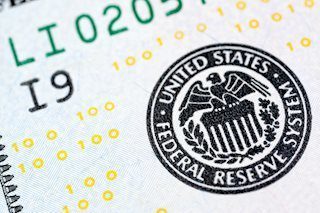Fed's Musalem: I would support additional tightening if inflation becomes stuck above 2%
|
Federal Reserve (Fed) Bank of St. Louis President Alberto Musalem noted on Tuesday that inflation progress may be a longer, slower process than many market participants currently hope. St. Lousi Fed President noted specifically that the labor market remains particularly tight, and that it could take entire months or quarters before policies drag inflation back to convicing Fed target levels.
Key highlights
I need to observe a period of favorable inflation, moderating demand and expanding supply before he will have confidence for an interest rate cut.
The retail sales data for May suggests aggregate demand is growing at a moderate pace so far in Q2.
I will remain vigilant until inflation is clearly and convincingly is well on its way back to 2%.
If inflation becomes stuck meaningfully above 2% or moves higher, I would support additional policy tightening.
These conditions could take months and more likely quarters to play out.
I expect some further cooling in labor market in coming months.
The labor market no longer seems overheated, but remains tight.
I expect aggregate consumption to moderate in coming quarters without stalling and then return to or slightly exceed trend by 2026.
Financial conditions feel accommodative in some parts of the economy, and restrictive in others.
It is possible that monetary policy transmission may be slower this cycle.
Personal Consumption Expenditures Price Index should show welcome downshift of inflation in May.
The current monetary policy stance seems restrictive, but there is some uncertainty about to what degree.
Continued high employment and wage growth should moderate impact of easing labor market conditions on aggregate demand.
There are potential early signs of continued progress on inflation.
Further Musalem
The Fed targets consumer prices, not housing prices.
Artificial intelligence, if adopted widely, will have material productivity impacts over the long term.
I really welcome news that the labor market has been rebalancing.
I am watching the labor market for signs of any unexpected deterioration, I am not seeing those signs at the moment.
Inflation FAQs
Inflation measures the rise in the price of a representative basket of goods and services. Headline inflation is usually expressed as a percentage change on a month-on-month (MoM) and year-on-year (YoY) basis. Core inflation excludes more volatile elements such as food and fuel which can fluctuate because of geopolitical and seasonal factors. Core inflation is the figure economists focus on and is the level targeted by central banks, which are mandated to keep inflation at a manageable level, usually around 2%.
The Consumer Price Index (CPI) measures the change in prices of a basket of goods and services over a period of time. It is usually expressed as a percentage change on a month-on-month (MoM) and year-on-year (YoY) basis. Core CPI is the figure targeted by central banks as it excludes volatile food and fuel inputs. When Core CPI rises above 2% it usually results in higher interest rates and vice versa when it falls below 2%. Since higher interest rates are positive for a currency, higher inflation usually results in a stronger currency. The opposite is true when inflation falls.
Although it may seem counter-intuitive, high inflation in a country pushes up the value of its currency and vice versa for lower inflation. This is because the central bank will normally raise interest rates to combat the higher inflation, which attract more global capital inflows from investors looking for a lucrative place to park their money.
Formerly, Gold was the asset investors turned to in times of high inflation because it preserved its value, and whilst investors will often still buy Gold for its safe-haven properties in times of extreme market turmoil, this is not the case most of the time. This is because when inflation is high, central banks will put up interest rates to combat it. Higher interest rates are negative for Gold because they increase the opportunity-cost of holding Gold vis-a-vis an interest-bearing asset or placing the money in a cash deposit account. On the flipside, lower inflation tends to be positive for Gold as it brings interest rates down, making the bright metal a more viable investment alternative.
Information on these pages contains forward-looking statements that involve risks and uncertainties. Markets and instruments profiled on this page are for informational purposes only and should not in any way come across as a recommendation to buy or sell in these assets. You should do your own thorough research before making any investment decisions. FXStreet does not in any way guarantee that this information is free from mistakes, errors, or material misstatements. It also does not guarantee that this information is of a timely nature. Investing in Open Markets involves a great deal of risk, including the loss of all or a portion of your investment, as well as emotional distress. All risks, losses and costs associated with investing, including total loss of principal, are your responsibility. The views and opinions expressed in this article are those of the authors and do not necessarily reflect the official policy or position of FXStreet nor its advertisers.